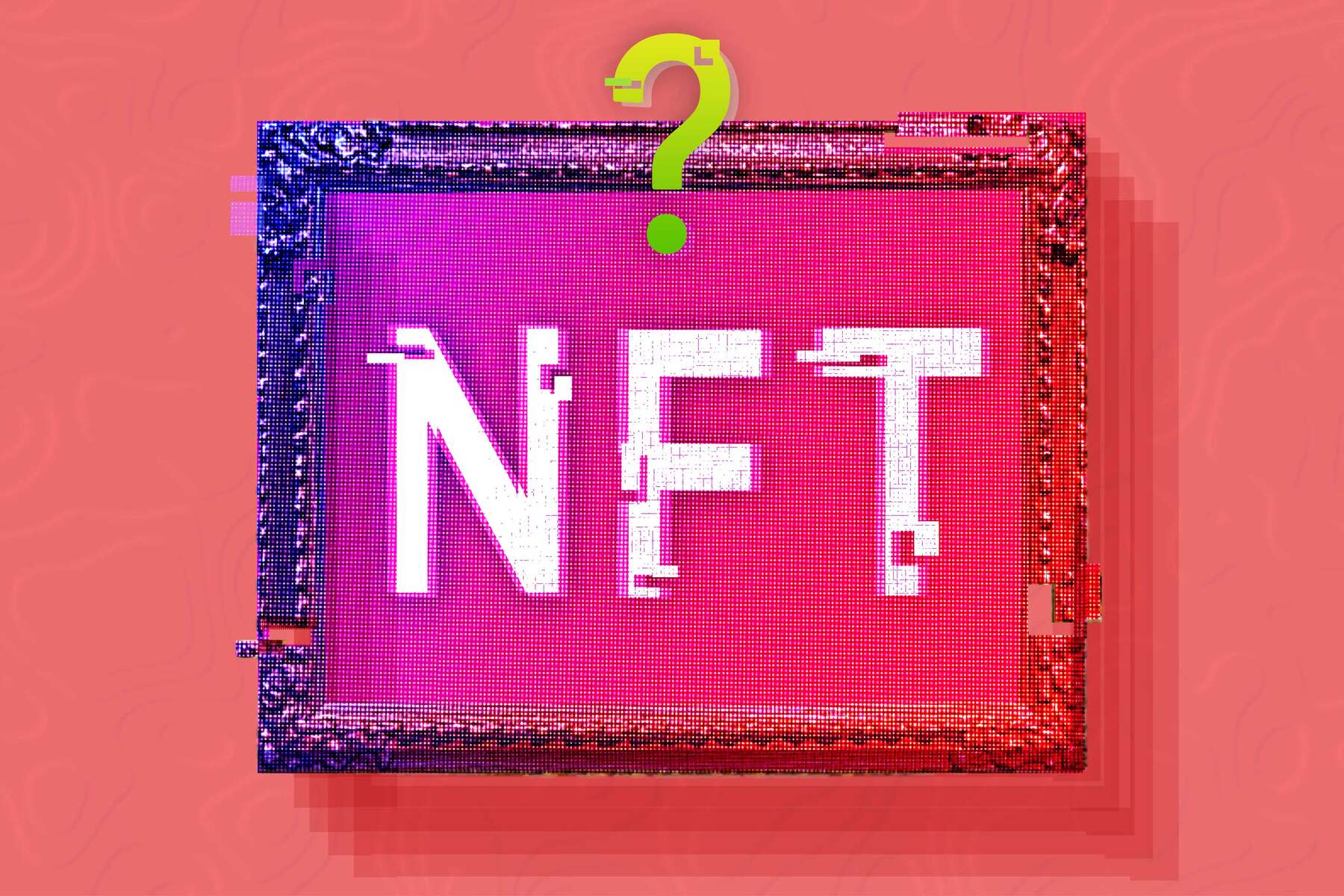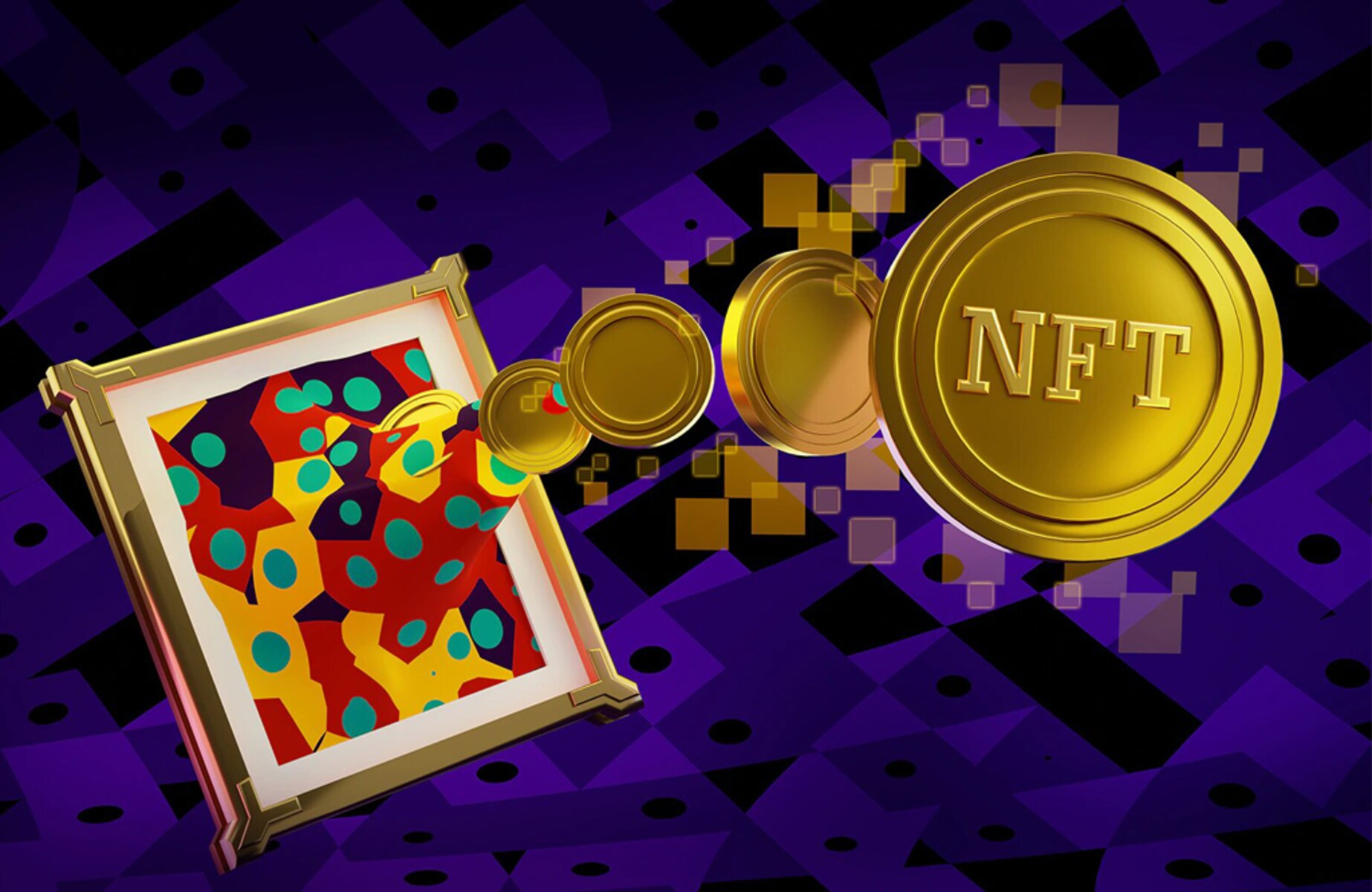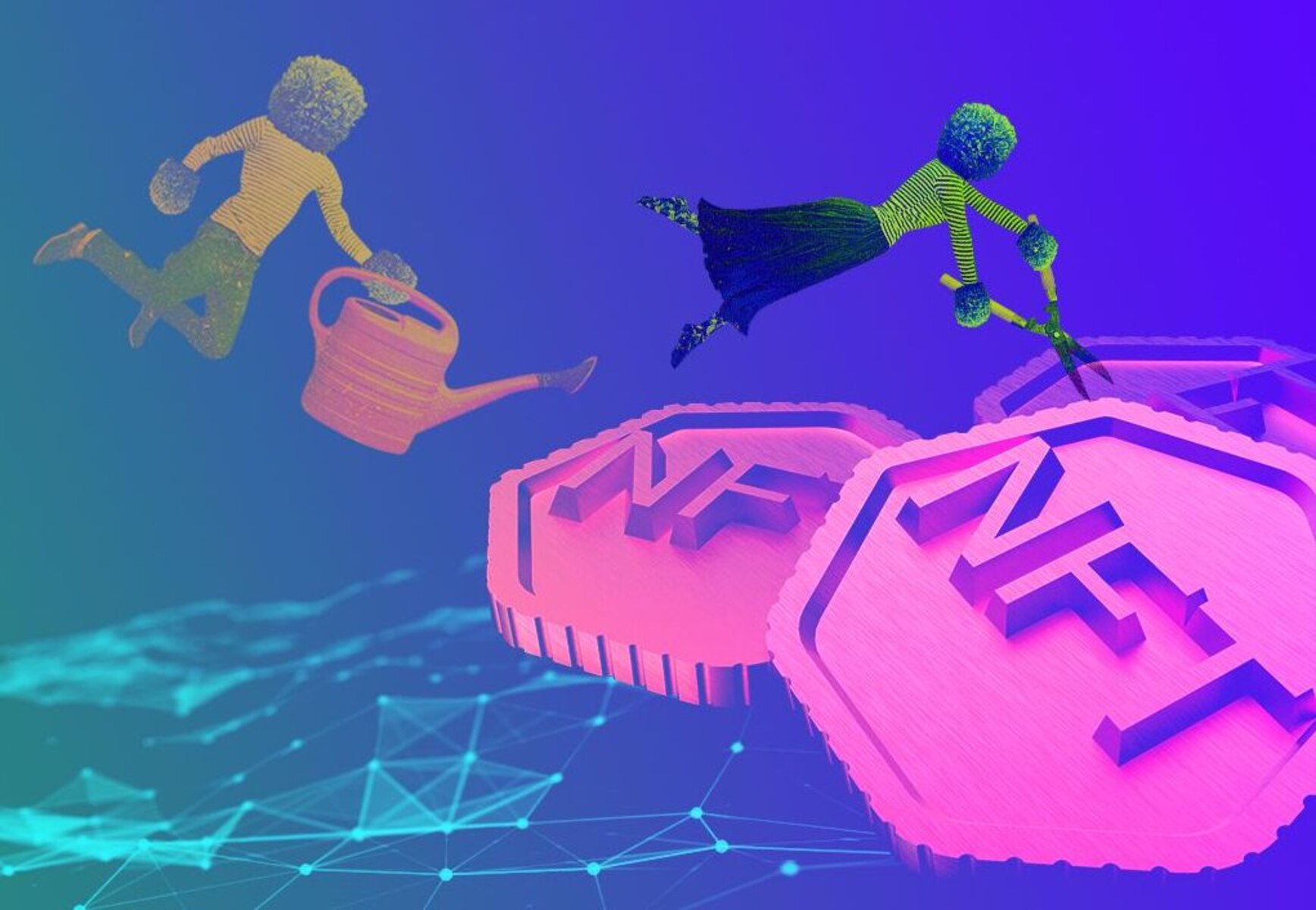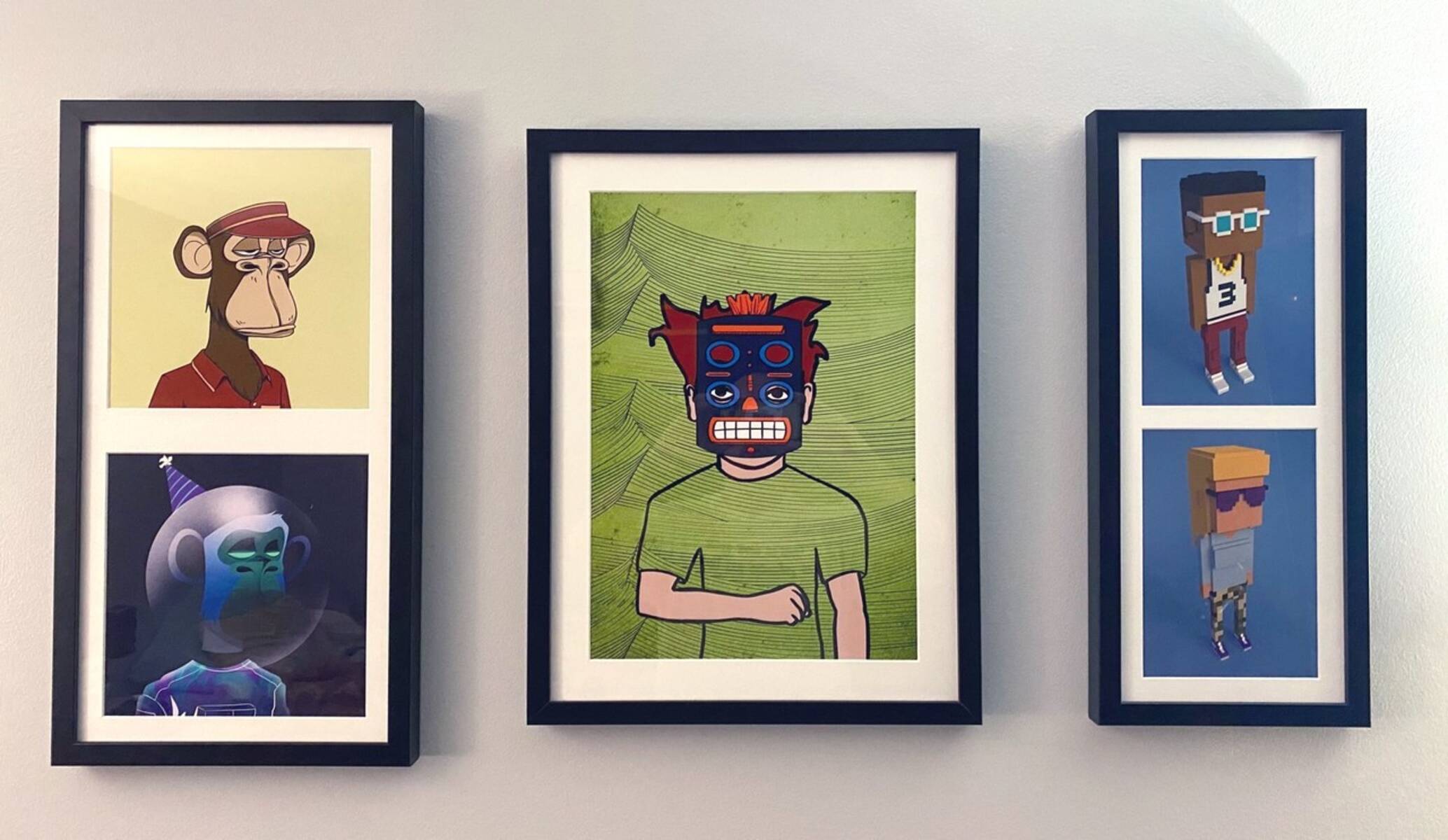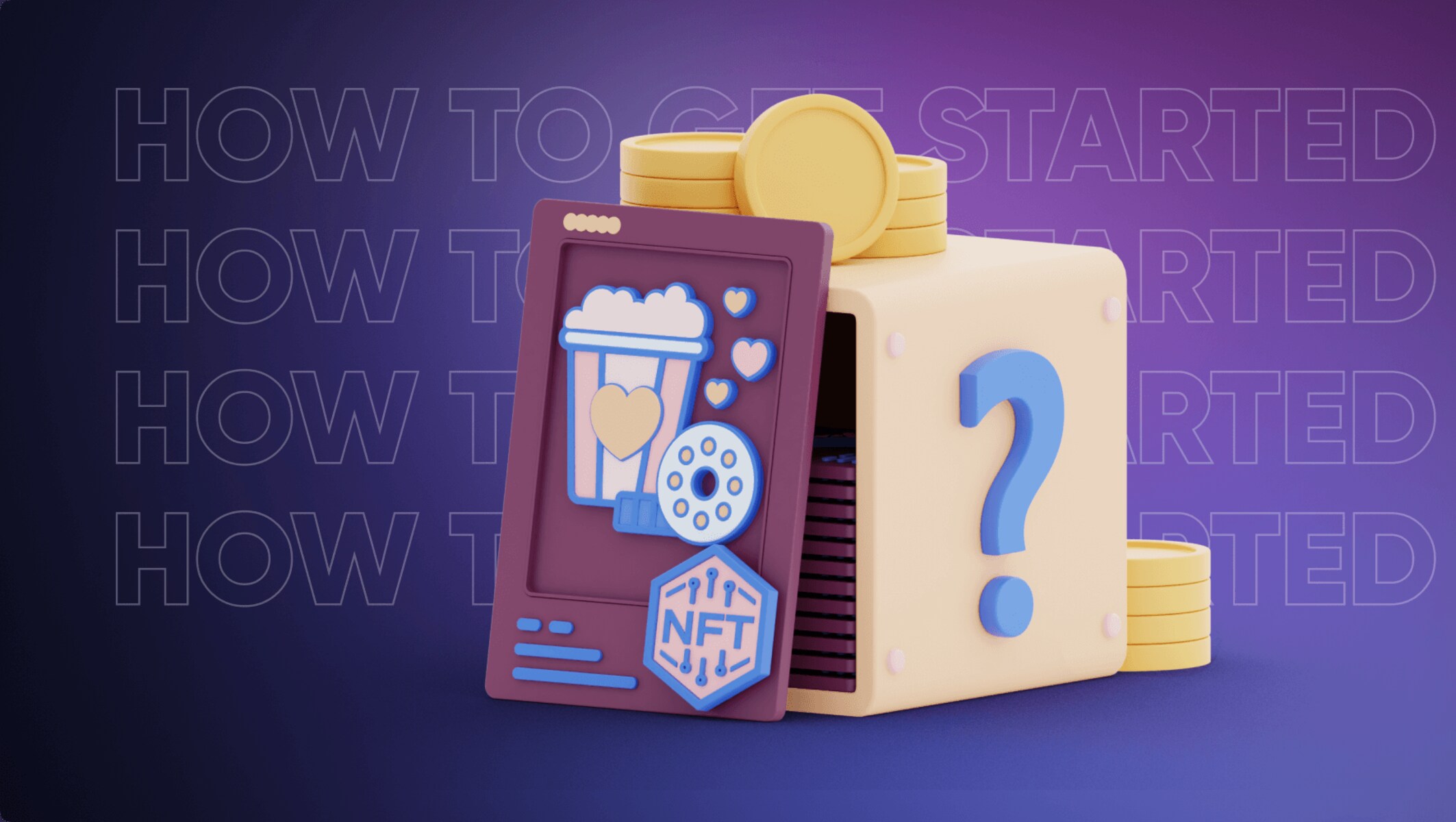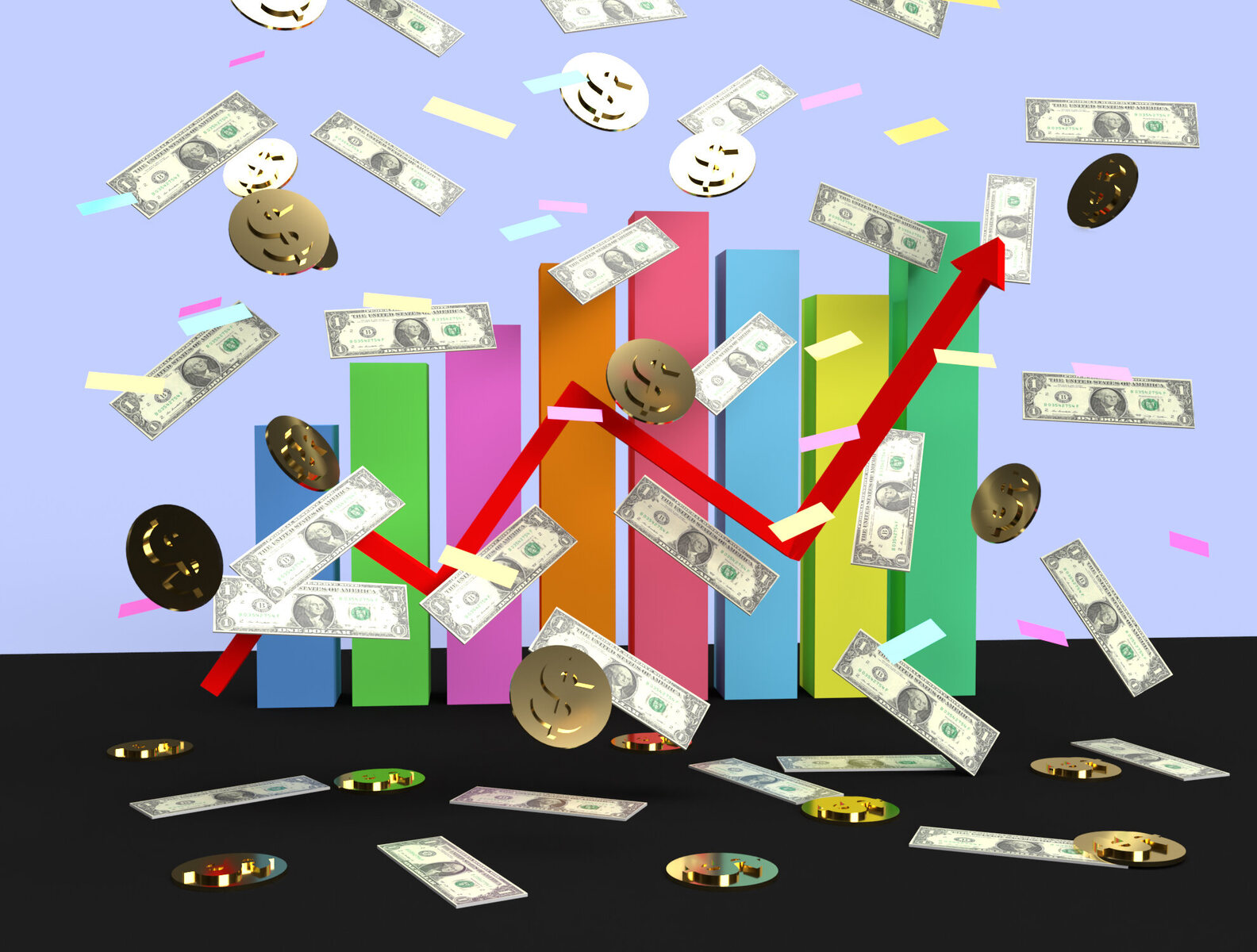Introduction
Welcome to the world of Non-Fungible Tokens, or NFTs. In recent years, the popularity and buzz surrounding NFTs have skyrocketed, captivating the attention of investors, artists, collectors, and even the general public. But what exactly are NFTs, and why have they become such a hot topic?
NFTs are unique digital assets that exist on blockchain networks. Unlike cryptocurrencies such as Bitcoin or Ethereum, which are fungible and can be exchanged on a one-to-one basis, NFTs are indivisible and cannot be exchanged on a like-for-like basis. Each NFT has a distinct value and cannot be replicated, making it one-of-a-kind.
What makes NFTs especially intriguing is their potential to revolutionize the way we perceive and trade digital assets. They offer creators, whether they are artists, musicians, or even writers, the opportunity to monetize and sell their work directly to fans and collectors, without the need for intermediaries or gatekeepers.
The value of an NFT is determined by various factors, including the rarity and scarcity of the digital asset, the artwork or collectible associated with it, celebrity endorsements, emotional value, bidding wars, secondary sales, and even controversies surrounding certain NFTs.
In this article, we will delve deeper into the world of NFTs, exploring the factors that influence their price, the concept of rarity, the role of celebrity endorsements, bidding wars, secondary sales, and recent examples of high-value NFTs. We will also touch upon the criticisms and controversies surrounding NFTs, as this new digital frontier is not without its fair share of skeptics.
So, fasten your seatbelts and get ready to explore the fascinating and ever-evolving world of NFTs. Whether you are an artist, a collector, or simply curious about this burgeoning market, understanding the dynamics behind the prices of NFTs will provide you with valuable insights that can help you navigate this exciting new landscape.
Understanding NFTs
Before diving into the factors influencing the price of NFTs, it’s crucial to have a solid understanding of what NFTs actually are and how they function. As mentioned earlier, NFT stands for Non-Fungible Token. But what does that mean?
An NFT is a unique, indivisible digital asset that is stored on a blockchain, typically the Ethereum blockchain. Unlike cryptocurrencies, which are fungible and can be exchanged for one another, NFTs have distinctive properties that make them irreplaceable and singular. Each NFT is assigned a unique identifier and holds value based on its rarity and desirability.
The technology behind NFTs allows for the verification of ownership and authenticity, which is crucial in the digital realm where copying and replication are so prevalent.
One of the key features of NFTs is the ability to attach metadata to them. Metadata can include information about the creator, description, history, or even unlockable content. This adds an extra layer of value and uniqueness to the NFT, making it more than just a digital file.
NFTs can represent various types of digital assets, including digital artwork, collectibles, music, video clips, virtual real estate, and even virtual identities. These assets can be bought, sold, and traded on various online marketplaces, allowing creators and collectors to connect directly without intermediaries, giving artists a new way to monetize their work and fans a way to support their favorite artists.
Ownership of an NFT is recorded on the blockchain, making it transparent and tamper-proof. This means that even if the original creator of the NFT decides to create additional copies or derivatives, the original NFT will remain unique and unaffected.
It’s important to note that owning an NFT does not necessarily grant copyright or intellectual property rights over the underlying asset. For example, owning an NFT of a famous painting does not give you ownership of the copyright to the painting itself. However, it does establish your ownership and provenance of that specific digital representation.
The rise of NFTs has sparked both excitement and debate. Some view NFTs as a groundbreaking technology that empowers creators and reshapes the digital economy, while others criticize the environmental impact of blockchain technology or question the value and sustainability of investing in digital assets.
Now that we have a solid understanding of what NFTs are and how they function, let’s explore the factors that contribute to the price and value of these unique digital assets.
Factors Influencing the Price of NFTs
When it comes to determining the price of an NFT, there are several factors that come into play. These factors contribute to the perceived value and desirability of the NFT, ultimately influencing the price it can command in the market.
Rarity and Scarcity of NFTs: Rarity is a fundamental factor in determining the value of an NFT. A rare or limited-edition NFT is often considered more valuable because it is one of a few in existence. Scarcity can be achieved through various means, such as creating a limited edition of an artwork or offering exclusivity to a select number of buyers.
The Artwork or Collectible: The quality and appeal of the artwork or collectible associated with the NFT can significantly impact its price. The more aesthetically pleasing, unique, or culturally relevant the artwork is, the higher its perceived value. Additionally, the reputation and track record of the artist can also play a role in determining the value of the NFT.
Celebrity Endorsements: The involvement of celebrities or well-known personalities can have a significant impact on the price of an NFT. The endorsement of a celebrity can bring attention and legitimacy to the NFT, increasing its perceived value and attracting a broader audience of potential buyers.
Bidding Wars and Emotional Value: Bidding wars can drive up the price of an NFT as collectors compete to own a highly desirable piece. Emotions and personal connections can also play a role in determining the value of an NFT. For example, if a particular artwork holds sentimental value or is associated with a significant event or milestone, collectors may be willing to pay a premium price to own it.
Secondary Sales and Royalties: The potential for future secondary sales and royalties can also influence the price of an NFT. Some NFTs come with provisions that entitle the original creator to a percentage of future sales. This can make an NFT more valuable, as investors see the potential for not only a return on their investment but also ongoing revenue streams.
These are just a few of the key factors that contribute to the price of an NFT. It’s important to note that the NFT market is still relatively new and evolving, and the dynamics of pricing can vary significantly depending on the specific artwork, creator, and market demand.
In the next sections, we will explore real-world examples of high-value NFTs and discuss the criticisms and controversies surrounding this emerging digital market.
Rarity and Scarcity of NFTs
One of the primary factors influencing the price of an NFT is its rarity and scarcity. In the world of NFTs, rarity refers to how unique or uncommon an asset is, and scarcity relates to the limited supply of that asset.
Rare and limited-edition NFTs often command higher prices because they are regarded as exclusive and sought after by collectors. The concept of scarcity creates a sense of value and urgency among potential buyers, as they know they are acquiring something that only a few others will possess.
Creators can achieve rarity by various means. For instance, they can limit the number of editions or copies of their digital artwork or collectible. This is analogous to limited prints of physical artwork, where the value is driven by the scarcity of the editions. By applying the same principle to NFTs, creators can generate a sense of uniqueness and exclusivity.
Another method to establish rarity is to offer one-of-a-kind NFTs, often referred to as “single editions.” These NFTs represent a truly unique digital asset that cannot be replicated or duplicated. By being the sole owner of an NFT, collectors possess something truly special and scarce in the digital realm.
In addition to limiting the number of editions or offering single editions, creators can introduce rarity through variations or attributes within a collection. For example, an artist may release a series of digital artwork where each piece has slight variations in color or composition. Collectors may be enticed to acquire multiple pieces within the collection, each with its own unique attributes, further reinforcing the sense of rarity.
Scarcity can also be created by imposing time limits on the availability of an NFT. For instance, a creator may auction an NFT for a limited period, after which it will no longer be available for purchase. This can create a sense of urgency among collectors who wish to acquire the asset before it becomes scarce.
The concept of rarity and scarcity taps into the psychology of human desire. We naturally gravitate towards things that are exclusive, unique, and not easily attainable. Collectors are willing to pay a premium price for NFTs that are rare, as they hold the potential for future value appreciation and bragging rights as proud owners of a scarce asset.
However, it’s essential to strike a balance when creating rarity and scarcity in the NFT market. Over-saturating the market with too many editions or flooding the market with NFTs can diminish their perceived value. Maintaining a sense of exclusivity and scarcity ensures that there is ongoing demand and interest in acquiring NFTs.
As the NFT space continues to evolve, creators and collectors alike are exploring innovative ways to introduce rarity and scarcity into the market. This dynamic interplay between rarity, scarcity, and demand contributes to shaping the ever-changing landscape of NFT pricing and value.
The Artwork or Collectible
The art or collectible associated with an NFT plays a significant role in determining its price and value. Just like in the traditional art world, the quality, uniqueness, and aesthetic appeal of the artwork or collectible can greatly influence the perceived worth of an NFT.
Artists who create digital artwork specifically for NFTs have the freedom to explore new mediums, styles, and techniques. They can leverage the limitless possibilities of the digital space to produce captivating and visually stunning creations that are impossible in the physical realm.
The creativity and artistic value of an NFT are subjective factors that can vary from person to person. However, certain factors tend to contribute to the higher value of an NFT artwork or collectible. These factors include technical skill, concept, originality, emotional impact, and cultural significance.
Technical Skill: The level of technical skill displayed by the artist in creating the digital artwork can greatly influence the perceived value. Skillful execution, attention to detail, and mastery of the digital tools used in the creation process demonstrate a higher level of craftsmanship and can enhance the value of an NFT.
Concept: The concept behind the artwork or collectible adds depth and meaning to the NFT. Unique and compelling concepts that provoke thought, tell a story, or explore new ideas can make an NFT more appealing and valuable to collectors.
Originality: Originality is a crucial aspect when it comes to the value of an NFT. Collectors seek out NFTs that offer something new and distinct, whether it be a groundbreaking style, a fresh artistic voice, or an innovative approach to digital art. The ability of the artist to bring something unique to the table adds value to the artwork or collectible.
Emotional Impact: Art has the power to evoke emotions, and NFTs are no exception. NFTs that resonate with a viewer on an emotional level, whether through nostalgia, awe, humor, or any other emotional response, tend to be highly sought after. The emotional connection created by the artwork or collectible can increase its value and desire among collectors.
Cultural Significance: Art has always reflected and influenced culture, and the same applies to NFTs. NFTs that capture the spirit of a particular era, address social or political issues, or make a statement about the digital age can hold cultural significance. This significance can boost the value of an NFT, as it becomes more than just a piece of artwork but a reflection of the times we live in.
The reputation and track record of the artist can also impact the value of an NFT. Artists who have established themselves in the traditional art world or have a strong following in the digital art community may attract a larger audience and higher prices for their NFTs.
Ultimately, the quality, originality, and emotional resonance of the artwork or collectible contribute to the subjective and ever-changing nature of pricing in the NFT market. It is the interplay between the artist’s vision and the viewer’s perception that gives life and value to the digital creations in the form of NFTs.
Celebrity Endorsements
In the world of NFTs, celebrity endorsements can have a significant impact on an NFT’s price and overall value. When a well-known celebrity or influential figure attaches their name and support to an NFT, it brings attention, credibility, and an expanded audience to the digital asset.
Celebrities often have a large and loyal following, both online and offline. When a celebrity endorses an NFT, their fans and followers take notice and become curious about the endorsed artwork or collectible. This exposure can lead to increased demand and competition among collectors, ultimately driving up the price of the NFT.
One reason why celebrity endorsements carry weight in the NFT market is the influence and trust that the celebrities have built with their audience. Fans may feel a personal connection to their favorite celebrities and value their opinions and tastes. Seeing a celebrity invest in and support an NFT can create a sense of validation and desirability for the digital asset.
Celebrities themselves are also taking advantage of the NFT market as a new revenue stream and way to connect with their fans. By creating and selling their own NFTs, celebrities can directly monetize their art, music, or unique experiences, without relying solely on traditional avenues like record labels or art galleries.
Additionally, collaborations between celebrities and prominent artists or digital creators can further enhance the appeal and value of an NFT. These collaborations bring together the worlds of entertainment and art, combining the celebrity’s fame and reach with the artistic creativity and vision of the creator. The resulting NFT becomes a fusion of both influences, attracting a diverse and passionate audience.
It’s important to note, however, that celebrity endorsements in the NFT market do come with their fair share of controversy and skepticism. Critics argue that celebrities jumping into the NFT space without a genuine understanding or passion for the technology dilutes its artistic and cultural significance. Some even label it as a cash grab or a celebrity-driven hype cycle.
Nevertheless, celebrity endorsements remain a powerful marketing tool in the NFT market, carrying the potential to amplify the exposure, demand, and value of an NFT. As the market continues to evolve, we can expect to see more collaborations between celebrities, artists, and digital creators, further blurring the boundaries between mainstream entertainment and the world of NFTs.
Bidding Wars and Emotional Value
One exciting and unpredictable aspect of the NFT market is the occurrence of bidding wars, where collectors fiercely compete to acquire a particular NFT. Bidding wars can significantly impact the price of an NFT, driving it up to remarkable heights.
Several factors contribute to the emergence of bidding wars in the NFT space. One significant factor is the combination of scarcity and demand. When an NFT is limited in quantity or highly sought after by collectors, the limited supply and high demand create a sense of urgency among buyers. The fear of missing out (FOMO) drives individuals to outbid one another, resulting in rapid price escalation.
Emotional value also plays a critical role in inciting bidding wars. NFTs can hold immense sentimental value for collectors, especially when they relate to a personally meaningful event or possess deep emotional significance. The emotional connection that individuals feel towards a particular piece can lead them to be more willing to pay a premium price in order to own it.
Collectors often develop a strong attachment to certain NFTs, considering them a representation of their identity, interests, or values. As a result, the desire to possess these NFTs can become deeply ingrained, causing individuals to engage in bidding wars driven by their emotional connection to the artwork or collectible. This emotional investment transforms the NFT into something more than just a digital asset. It becomes a cherished possession with personal significance.
Bidding wars can also be fueled by the prestige and notoriety associated with owning a highly desired NFT. Some collectors are motivated by the status and recognition that comes with owning an exclusive or high-value piece. They see the acquisition as a symbol of their wealth, taste, or influence within the NFT community.
However, it is worth noting that bidding wars can also be driven by speculative motives. Some collectors participate in bidding wars with the expectation of reselling the NFT at a higher price in the future. This speculative behavior can lead to inflated prices and market volatility.
While bidding wars can drive up the price of an NFT significantly, they can also present challenges. The skyrocketing prices may deter potential buyers who cannot afford the high costs, limiting accessibility and participation in the market. Moreover, the volatility of bidding wars can result in a fluctuating market, raising concerns about the sustainability and long-term value of NFT investments.
Nonetheless, bidding wars continue to capture the attention and excitement of collectors and investors in the NFT market. The emotional value, sense of urgency, and competitive nature they evoke contribute to the dynamic and ever-changing landscape of NFT pricing.
Secondary Sales and Royalties
Secondary sales and royalties are important factors that contribute to the price and long-term value of an NFT. Unlike physical artwork, where artists often receive no compensation for subsequent resales, NFTs have the potential to generate ongoing revenue for creators through secondary sales.
When an NFT is resold on a secondary market, such as an online marketplace, the creator of the NFT can include a royalty or commission fee in the smart contract. This means that every time the NFT is sold in the future, a percentage of the sale price goes back to the original creator.
Secondary sales and royalties provide a continuing incentive for creators to produce high-quality and valuable NFTs. It allows creators to benefit from the appreciation in value of their artworks or collectibles over time, ensuring that they can share in the success and value they have helped to create.
This royalty feature can also be seen as a way to establish a stronger relationship between artists and collectors. Just as collectors can potentially profit from the future value of an NFT, artists can benefit from the ongoing success of their creations, even after the initial sale.
Additionally, secondary sales and royalties create a cyclical effect in the NFT market. They encourage collectors to invest in NFTs with the knowledge that their future resale may generate returns, providing them with a potential investment opportunity. This, in turn, increases demand and liquidity in the NFT market, benefiting both creators and collectors.
However, it’s important to note that the inclusion of secondary sales and royalties in NFTs is not without controversy. Some argue that the royalty mechanism may hinder market liquidity and discourage speculative investments. Critics also question the fairness and applicability of such royalties in the digital realm, where the boundaries of intellectual property rights and ownership can be complex.
Nevertheless, the implementation of secondary sales and royalties in NFTs reflects a shift toward recognizing the ongoing value and contributions of creators. It allows artists to participate in the upside potential of their artworks or collectibles, even as they change hands multiple times on the secondary market.
As the NFT market continues to evolve, we may see further developments in the area of secondary sales and royalties, as artists, marketplaces, and collectors explore new ways to ensure the sustainability and equitable distribution of value within the NFT ecosystem.
Recent Examples of High-Value NFTs
The world of NFTs has witnessed several groundbreaking sales and high-value transactions in recent years, solidifying the growing popularity and potential profitability of this digital asset class. Let’s explore a few notable examples that have made headlines and captured the attention of both the art world and wider public.
Everydays: The First 5000 Days by Beeple: One of the most iconic and record-breaking NFT sales to date is Beeple’s artwork titled “Everydays: The First 5000 Days.” The digital collage, comprising 5,000 individual artworks created over 13 years, was sold at a historic auction hosted by Christie’s for a staggering $69.3 million. This sale thrust NFTs into the mainstream art world, propelling Beeple to become one of the most recognized names in the NFT space.
CryptoPunk #7804: CryptoPunks are among the most popular and valuable NFT collectibles. In March 2021, a rare alien-themed CryptoPunk, known as CryptoPunk #7804, sold for approximately $7.6 million. This particular CryptoPunk is one of only nine alien punks in existence, making it highly sought after by collectors due to its extreme rarity and desirability.
Crossroads by Beeple: Another notable sale by Beeple was the artwork titled “Crossroads,” which was sold as an NFT for $6.6 million. This digital art piece, commenting on the 2020 U.S. presidential election, gained attention for its thought-provoking concept and striking visual composition. Its high-value sale highlighted the growing demand for politically and socially relevant NFT artwork.
The Fungible by Pak: NFT artist Pak made headlines with the sale of their NFT collection titled “The Fungible.” The collection, consisting of 15 unique artworks, was sold for approximately $16.8 million in a private auction. Each piece in the collection explored the concept of identity and the nature of value, showcasing the artist’s unique style and thought-provoking concepts.
Twitter Founder’s First Tweet by Jack Dorsey: The first tweet ever posted by Twitter’s co-founder, Jack Dorsey, was sold as an NFT for a remarkable $2.9 million. This sale highlighted the demand for iconic and historically significant digital content, as collectors sought to own a piece of internet history in the form of an NFT.
NBA Top Shot Moments: NBA Top Shot, a platform for buying, selling, and trading NBA-licensed NFTs, gained immense popularity in early 2021. Moments highlighting memorable plays from basketball games sold for significant amounts, with one rare LeBron James dunk selling for over $200,000. The NBA Top Shot marketplace demonstrated the appeal of collecting sports highlights in the form of NFTs.
These recent examples of high-value NFTs exemplify the wide range of possibilities and potential for artistic, historical, and sports-related digital content within the NFT market. They showcase the growing demand for unique and digitally scarce assets, pushing the boundaries of what traditional art and collectibles can offer.
As the NFT market continues to evolve, it will be fascinating to see what new groundbreaking sales and high-value transactions emerge, further cementing the place of NFTs in the world of art, culture, and digital ownership.
Criticisms and Controversies
While NFTs have gained significant attention and traction in recent years, they are not without their fair share of criticisms and controversies. Critics raise concerns about various aspects of the NFT market, raising important questions and sparking debates within the art and digital communities.
Environmental Impact: One of the most common criticisms of NFTs is their environmental impact. NFTs, especially those minted on the Ethereum blockchain, consume a considerable amount of energy due to the computational power required for verification and transaction processing. Critics argue that this high energy consumption contributes to carbon emissions and exacerbates the ongoing concerns surrounding climate change.
Value and Ownership: Some skeptics question the underlying value and ownership of NFTs. They argue that digital assets, often easily replicated, can lack the inherent value and scarcity associated with physical works of art or traditional collectibles. Additionally, concerns are raised about the ease with which NFTs can be copied, raising questions about the uniqueness and authenticity of the assets being bought and sold as NFTs.
Speculation and Market Volatility: The rapid rise and volatility of the NFT market have led to concerns about speculation and a potential bubble. Critics raise concerns that the high prices being paid for NFTs may not be sustainable in the long run, and that many buyers are driven by investment motives rather than an appreciation for the artistic or cultural value of the NFTs.
Accessibility and Exclusivity: The NFT market has also faced criticism for its lack of accessibility. High prices and exclusivity can make it difficult for smaller artists or less affluent collectors to participate fully in the market. This exclusivity detracts from the democratizing potential that NFTs initially promised, as it becomes dominated by high-profile artists and wealthy collectors.
Intellectual Property Concerns: The digital nature of NFTs raises complex questions surrounding intellectual property rights. As NFTs can be created and sold without the explicit permission of the original creator, issues of copyright infringement and unauthorized commercialization can arise. The lack of clear regulations and legal frameworks adds to the challenges and controversies surrounding the ownership and rights associated with NFTs.
Artistic and Cultural Value: Traditional art world purists question the artistic and cultural value of digital artworks sold as NFTs. Some argue that the instantaneous and copyable nature of digital art undermines the perceived craftsmanship, rarity, and cultural significance that physical works of art hold.
These criticisms and controversies fuel ongoing discussions and debates in the NFT community. They underline the need for further exploration and refinement of the NFT market to address environmental concerns, improve accessibility, establish clearer regulations, and ensure the sustainability and integrity of the digital art and collectibles space.
Conclusion
NFTs have brought a wave of excitement and innovation to the world of digital assets. These unique and indivisible tokens have provided artists, creators, and collectors with new opportunities to engage, monetize, and own digital artworks and collectibles. From digital art to music, virtual real estate to sports highlights, NFTs have opened up a whole new realm of possibilities.
Throughout this article, we have explored the factors that influence the price of NFTs, including rarity, the artwork or collectible, celebrity endorsements, bidding wars, and the potential for secondary sales and royalties. We have also examined recent examples of high-value NFTs, which have shattered records and brought NFTs into the spotlight.
However, NFTs are not without their fair share of criticisms and controversies. Concerns about the environmental impact, value and ownership, market volatility, accessibility, intellectual property, and artistic and cultural value have raised valid questions and sparked important debates within the NFT community.
As the NFT market continues to evolve, it is crucial to address these concerns and have open discussions about the environmental implications, inclusivity, and long-term sustainability of the NFT ecosystem. Clear regulations, improved energy efficiency, and increased accessibility can help shape a more ethical and balanced NFT market.
Despite the criticisms and controversies, NFTs have undoubtedly disrupted the traditional art market and challenged established norms. They have allowed artists to connect directly with collectors, granted ownership and provenance for digital assets, and opened avenues for new forms of creativity and expression.
As technology advances and the NFT space continues to mature, it is exciting to imagine what possibilities lie ahead. The potential for innovative collaborations, the exploration of virtual worlds, and the fusion of physical and digital art can push the boundaries of what is possible with NFTs.
Whether you are an artist, collector, or simply curious about this emerging space, understanding the factors that influence the price of NFTs is essential. It allows you to navigate the market, make informed decisions, and appreciate the value and significance of these unique digital assets.
As we move forward, let’s embrace the transformative power of NFTs while also addressing the challenges and controversies to create a more inclusive, sustainable, and exciting future for the world of digital art, collectibles, and ownership.







